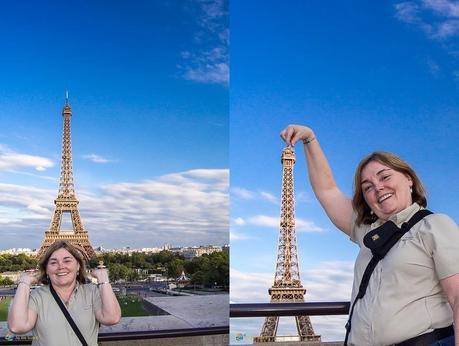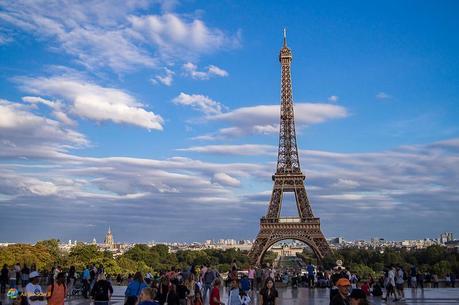Are you traveling to a dream destination? Bringing your camera? A little bit of planning beforehand will help to ensure you take your best photos ever.
To help avoid any post-trip disappointment in what you captured on camera I have prepared a list of 4 tips for great travel photos. These are things you should do before you even head out the door.
If you invest a few extra minutes before you go on your vacation and follow this simple checklist, your photography will go smoothly and you will be proud to show off some great travel photos when you get home. Besides, you will have enough to think about as you leave your home and your camera equipment should be a grab-and-go thought.
1. Have a shot list in mind
The first thing to do is to study other photos of where you are going. Know the iconic shots.

My shot list for the Eiffel Tower in Paris included several different angles of the same subject.
- Decide what you want to capture. Write a list of the shots you want to take in a notebook. This shot list will be your photography journal. Keep your journal with your photography equipment.
- Which pictures do you really like? Note where the photographer was standing. Pay attention to any special angles that the shot may have been taken from, such as a balcony. It will give you an idea of what you like so that you can apply your style to your shots. Include any ideas you have about a special shot angle you think might work for you in your shot list.
- Depending on what equipment you have, note any lenses you will need to cover the trip. Make a list of these items and pull them aside from the rest of your equipment in preparation for step 2.
2. Be sure your equipment is clean
There is nothing worse than getting out in the field and nailing the shot list perfectly and then coming back extremely excited after a perfect day of shooting … only to find you had lens dust all over your raw files. Yes, you know how to fix them … No, you don’t have the time to fix them. UGGGHHH!

A dirty lens left dust marks on photos from a visit to Sintra, Portugal … this is why you want to clean your equipment before shooting.
- Take the time now to clean your camera, even if it is a point and shoot. Clean each lens you will bring on your trip. Don’t forget to clean each filter you will use, too. Clean the body as well and make sure there is no dust on the mirror or sensor.
- Take a few shots after you have cleaned the equipment. It pays to verify that everything is clean and free from dust.
3. Create a packing list

Part of the “iconic” fun of the Eiffel Tower is perspective shots.
Once you have cleaned your equipment, make a packing list of what you will take and include serial numbers of your equipment. Remember to include essentials like:
- filters
- batteries
- tripod (if necessary)
- lens cloths
- lens cleaning pens
- cleaning fluid
- journal
- light meters
- flash
Carry the list with you on your trip. Keep it secure, stored in a different place than your equipment. This will be important in the unfortunate situation where someone parts you from your equipment and you need to report it to the local authorities.
4. Pack your equipment
Pack your equipment now so that you’ll just have to grab you camera bag when you actually are running to catch the plane (hopefully on-time). The best time to pack is while everything is fresh in your mind and the shots you want to take are burning into your brain. This thinking process will help you to remember everything and then forget it as the trip nears. Nothing is worse than researching on the plane the shots you want and then realizing you should have packed that Fish-eye lens at 35,000 feet over the Atlantic.

The Iconic Eiffel Tower in Paris, France
Now you can go and shoot away, safe and secure
With all your thoughts matching the equipment in your camera bag, you are free to roam about the planet, knowing that all your planned shooting needs are covered. One more thing: using your photo journal, record anything you find different from your research so that you will improve your research better before your next journey. A journal is a great teaching mechanism and will help you grow as a travel photographer beyond anything else except actually being out there shooting.
Happy clicking!
For more photo tips you may also enjoy reading:
- Photo Tips: Low light hand-held modes for travel photography
- Photo Tips: Understanding f-stop to control depth of field
- Photo Tips: Burst Mode – How to Shoot More of Less

